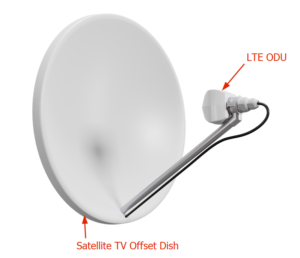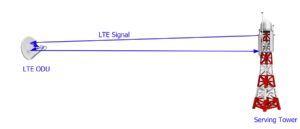Bridging The Connectivity Gap: Enhancing LTE Antenna Gain To Boost LTE Signal
National Research and Education Networks [NRENs] are expected to connect all R&E [Research & Education] community sites and institutions regardless of physical location or infrastructure presence. This expectation necessitates that the NREN think outside the box to create new and unconventional last-mile solutions. One innovative approach involves boosting the LTE (Long-Term Evolution) connectivity in regions lacking optical fiber infrastructure and those with rugged terrains where it is difficult to deploy microwave point-to-point links due to the difficulty in establishing line-of-sight.
Deployment of Enhanced LTE Setup
The effectiveness of LTE connectivity hinges significantly on the user equipment’s (UE) antenna properties. Antenna gain, a critical factor in signal strength, measures an antenna’s ability to focus its radiation pattern in a specific direction, with higher gains equating to better performance. In areas where the LTE signal exists but is too weak for conventional handheld devices, the solution lies in elevating the antenna gain of outdoor LTE UE devices.
In a series of iterative deployments, the most promising results emerged by utilizing satellite TV offset dishes to enhance the antenna gain of an outdoor LTE UE. The offset dish, functioning as a reflector antenna, catapulted the achieved gain to an impressive 33 dBi. This stands in stark contrast to the 0-3 dBi antenna gain typically achieved on handheld mobile devices allowing for the utilization of LTE service from very distant towers. Consequently, while a standard mobile phone might struggle to detect any LTE signal, the enhanced LTE device equipped with the offset dish registers an equivalent of full LTE signal bars.

The Satellite TV offset dish reflector antenna focuses the incoming signal from the tower onto the LTE ODU positioned at its focal point and it focuses the outgoing signal towards the LTE tower in a beam.

Resulting Performance and Latency
The tangible impact of this LTE optimization is evident in the observed performance metrics. The enhanced LTE connection demonstrates a latency of under 50 milliseconds, a substantial improvement that ensures a seamless and responsive user experience. This low-latency connectivity is particularly crucial in regions where traditional satellite solutions would provide a high latency of about 500ms.

Conclusion
In the pursuit of universal connectivity, NRENs are pushing boundaries and embracing unconventional solutions to bridge the digital divide. The innovative use of satellite TV offset dishes to enhance LTE connectivity showcases the potential for overcoming challenges in underserved regions lacking traditional infrastructure. By achieving remarkable antenna gains and low latency, this approach offers a beacon of hope for communities that have long been left in the shadows of digital isolation. As technology continues to evolve, such creative solutions hold promise for a more inclusive and connected future.